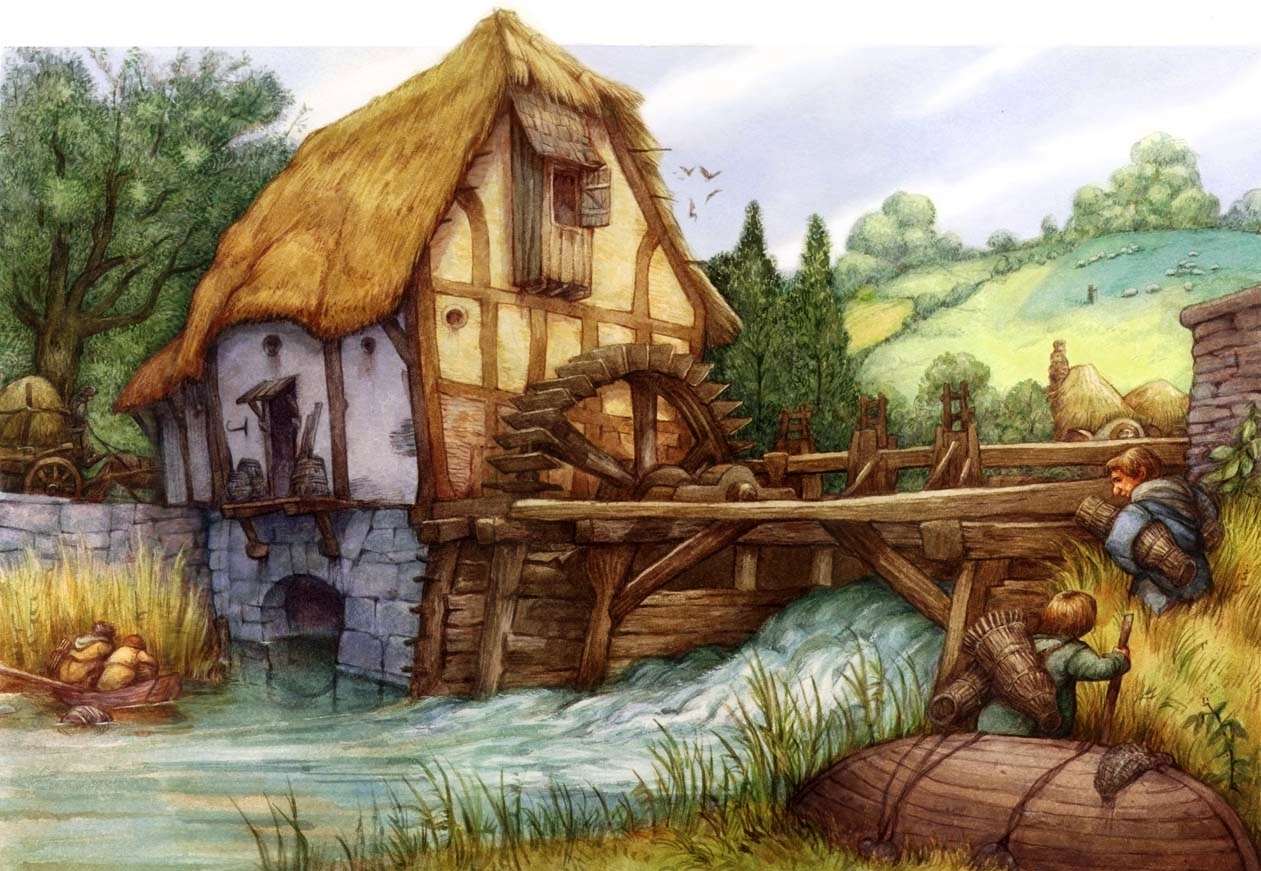Fulling Mill
Fulling mills are large buildings resembling gristmills, designed for the crucial task of completing the cleansing process for carded or combed wool. This involves matting the fibers together to enhance their strength. While much of the fulling process is still carried out manually due to the primitive nature of machinery, fulling mills are present in more advanced hexes, particularly those of type-6 or higher.
Contents
The fulling capacity of a mill typically ranges from 25 to 100 lbs. of spun fiber per day, contingent on the efficiency of the mill. Once the thread is manufactured, it's sacked and prepared for transport to be utilized by weaving guilds.
Inhabitants
Typically overseen by an extended family, the management structure of these mills varies. Rolling 2d6, a result less than 7 would indicate one couple and children managing the mill, while a roll of 8-12 suggests the involvement of two or more related couples and siblings.
Construction
Water power is harnessed to set a wheel in motion, connected to an axle housing a cam. This cam facilitates the relentless pounding of a massive hammer, creating agitation among wool fibers immersed in water-filled trays beneath the hammer's force. This process serves not only to cleanse and whiten woolen cloth, but also finds application in the treatment of pulled cotton or retted flax, preparing these fibers for the subsequent weaving of cotton cloth or linen. While similar milling arrangements are crafted for managing other fibers like jute or hemp, fulling mills for these materials are infrequently encountered.
Compact gristmills, with dimensions of around 760 sq. ft. and a height of 22 ft., feature square or rounded spaces. Essential to their operation is a wheel with a minimum diameter of 15 ft. The construction of such mills necessitates knowledge of authority-status. On the other hand, larger fulling mills can prove impractical in many parts due to their reliance on a stream's consistency and the need for a skillful operator to supervise the intricate process.
Location
A fulling mill requires less force compared to a gristmill, making it adaptable to rivers as narrow as "1 point" wide. Additionally, the versatility of fulling mills extends to being powered by wind. These mills are typically only found in provinces with a significant presence of fiber-growing, cloth-making, or clothing-related activities. The demand for such facilities arises from the need to process and refine fibers for textile production.
In parts lacking these references, the construction of fulling mills is uncommon.
See also,
Hammer (symbol)
The Adventure
